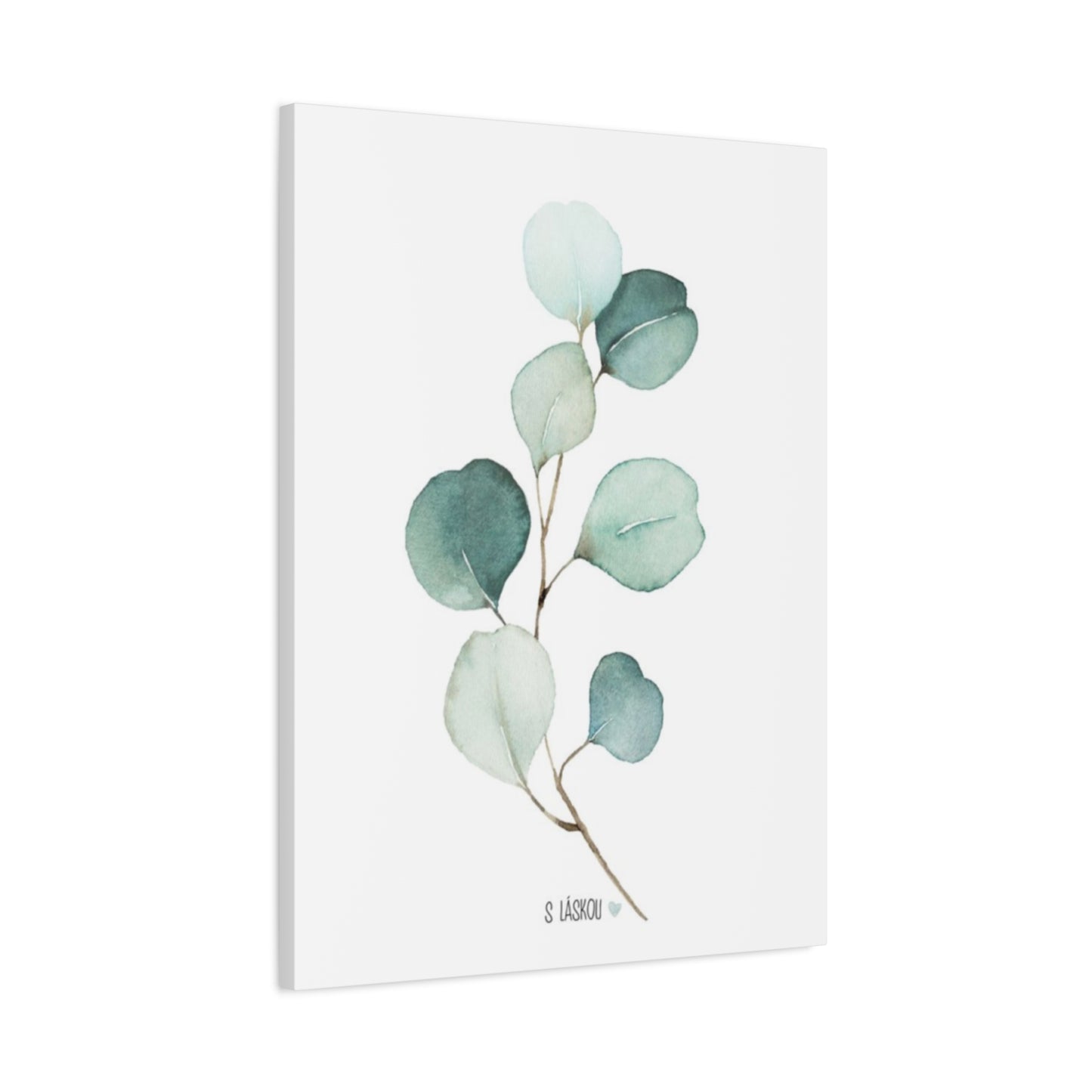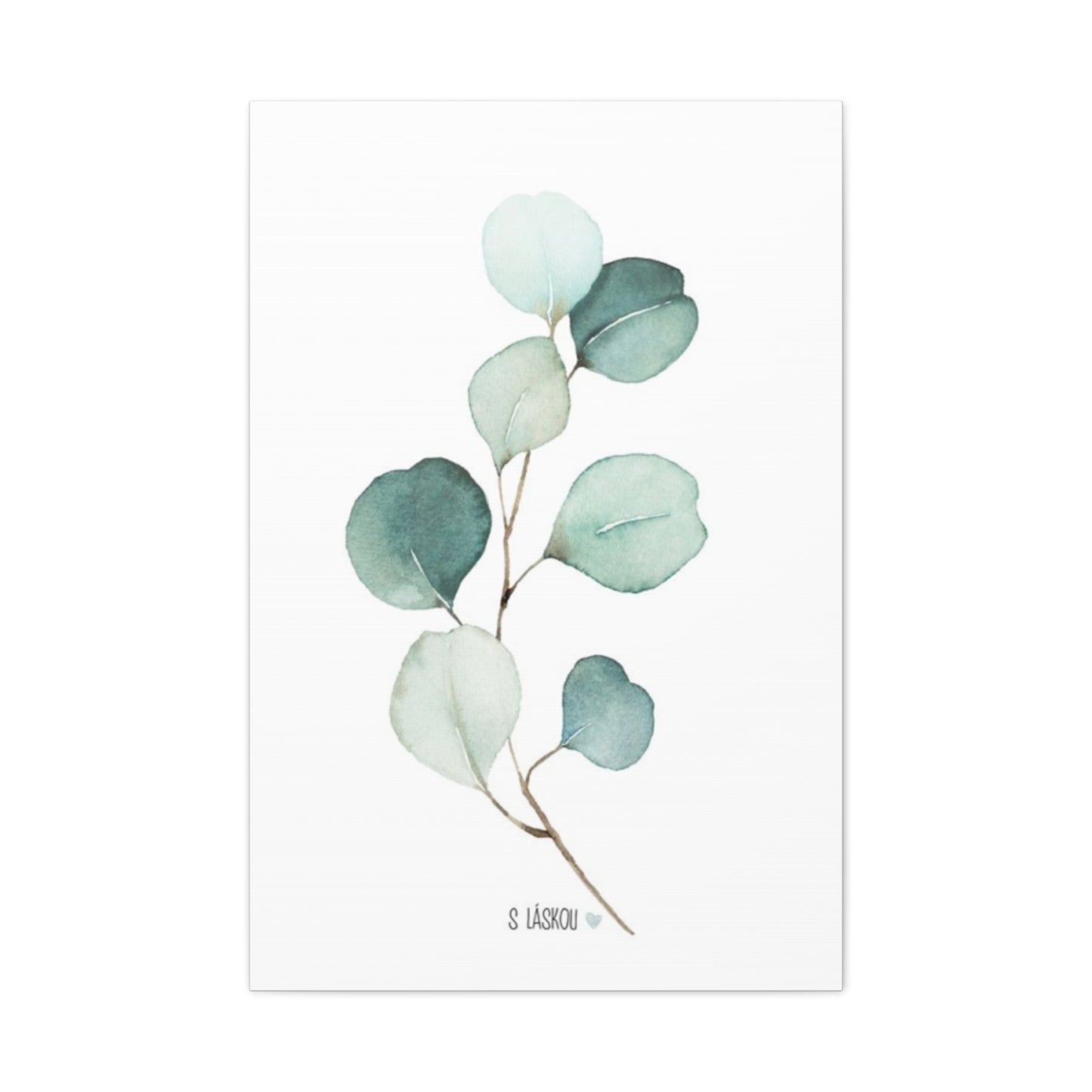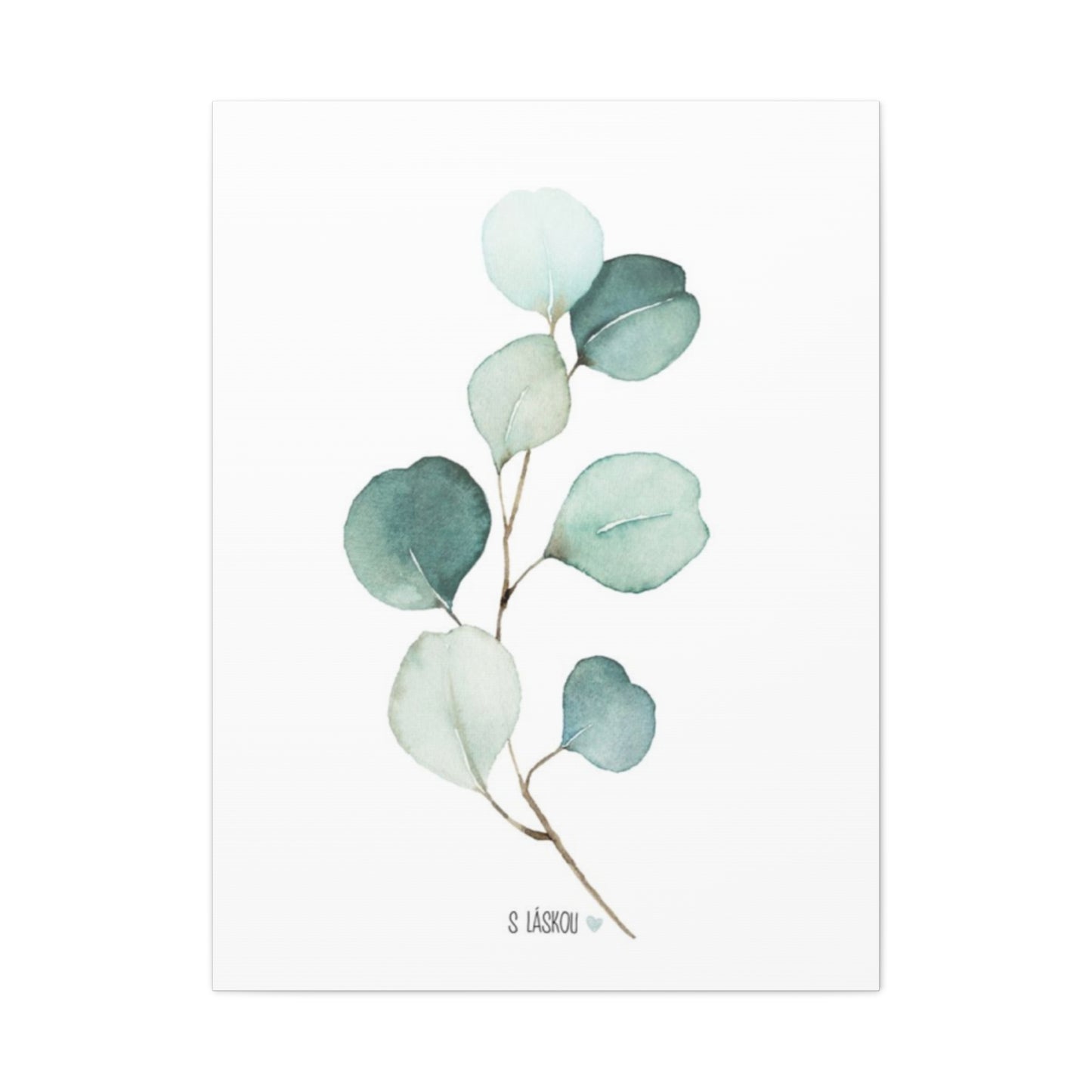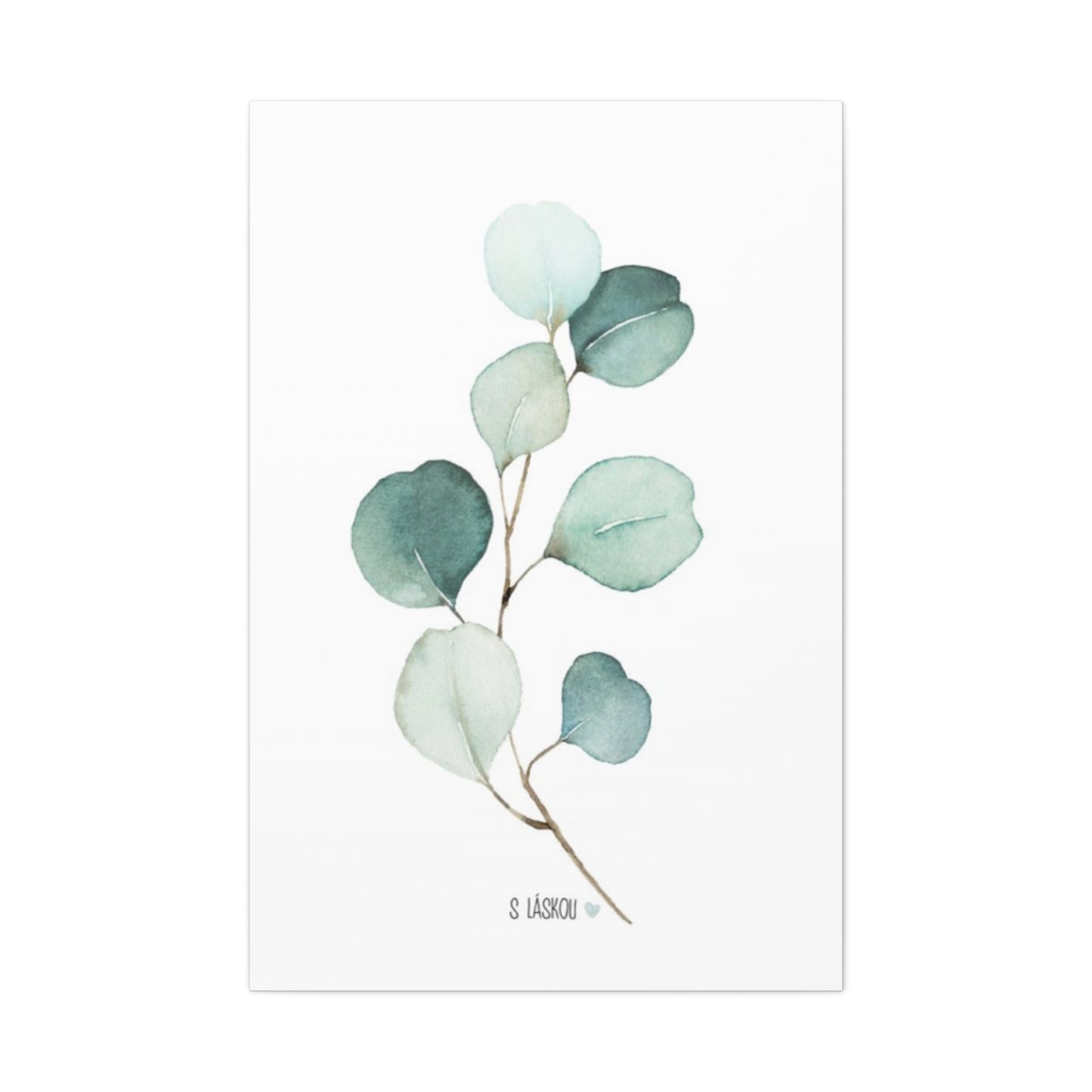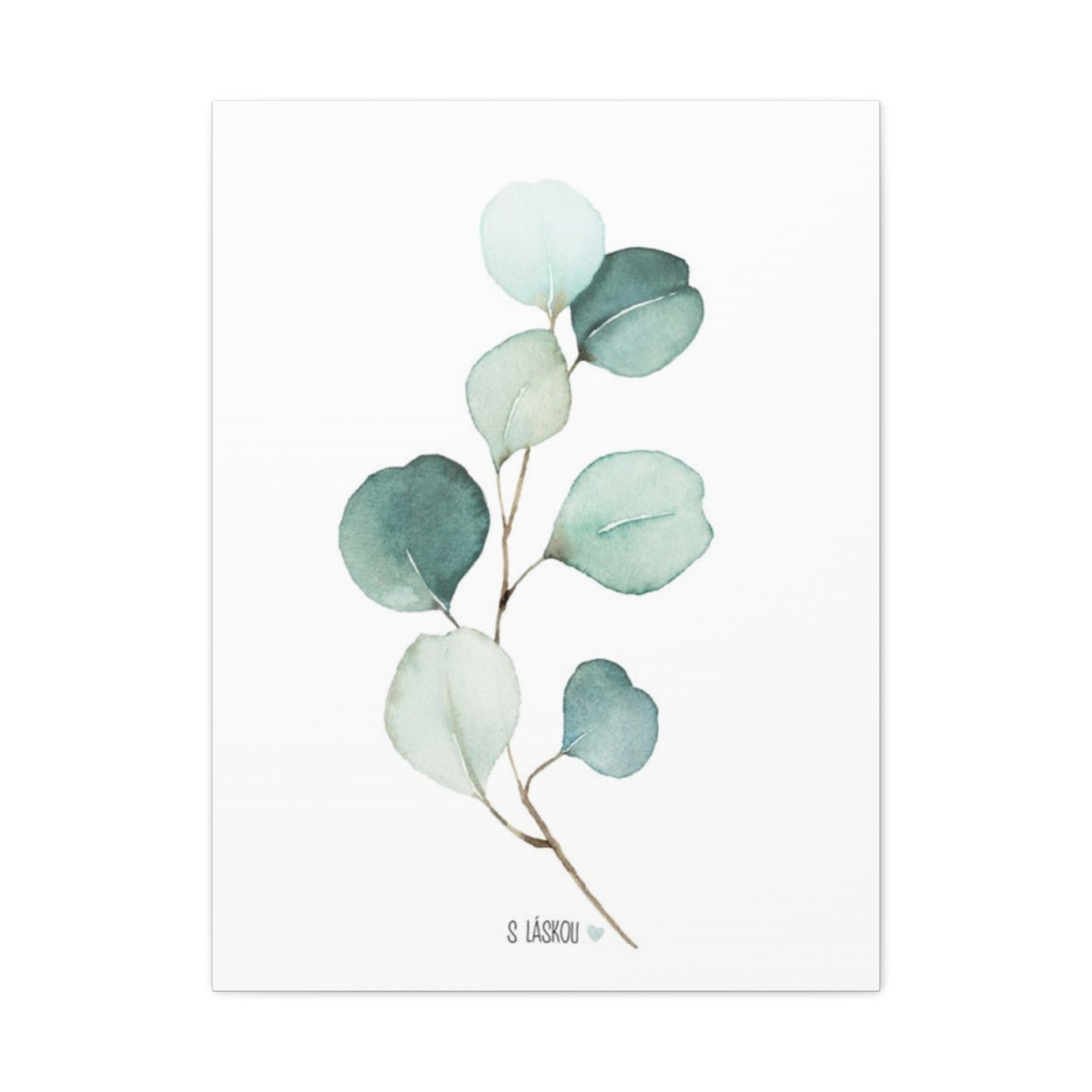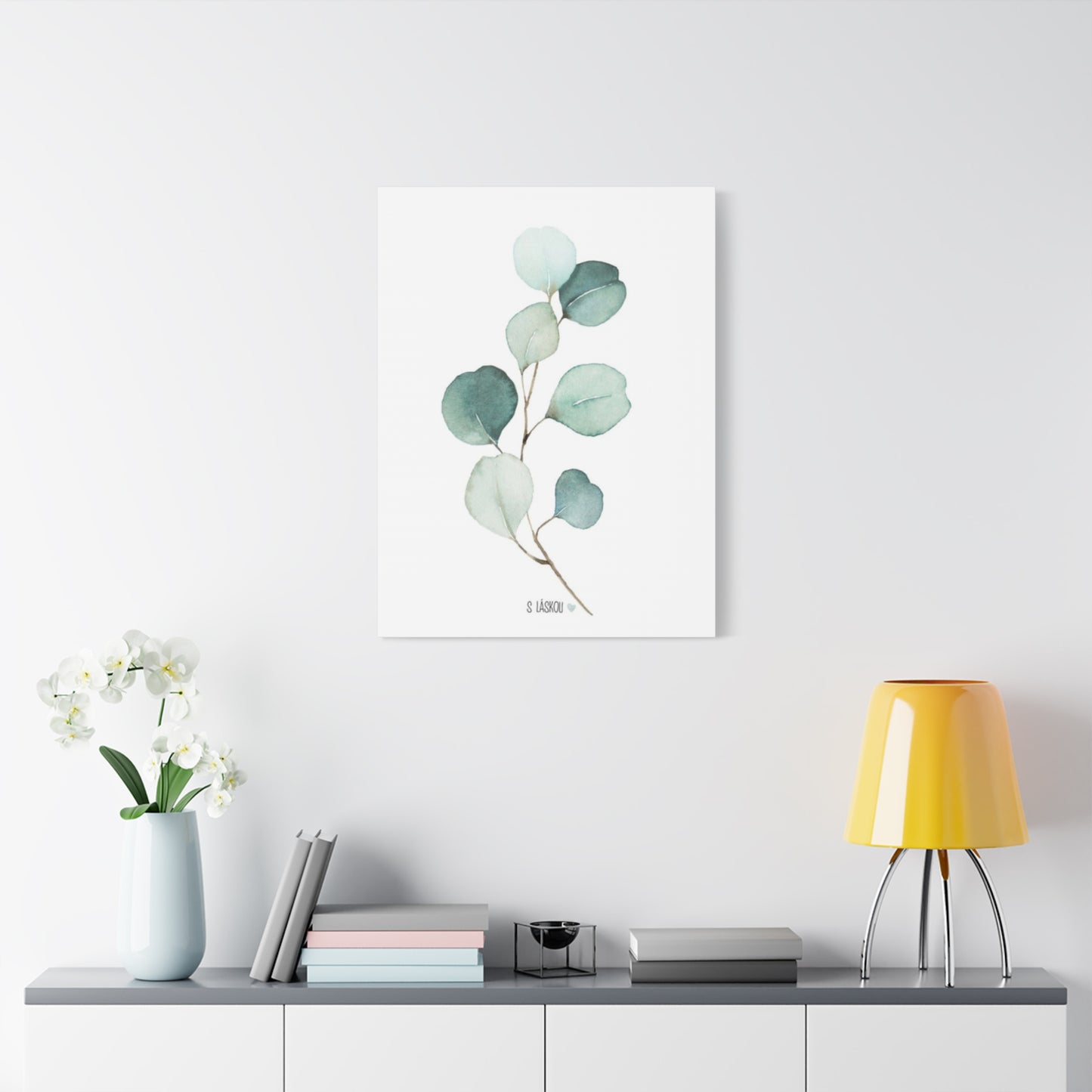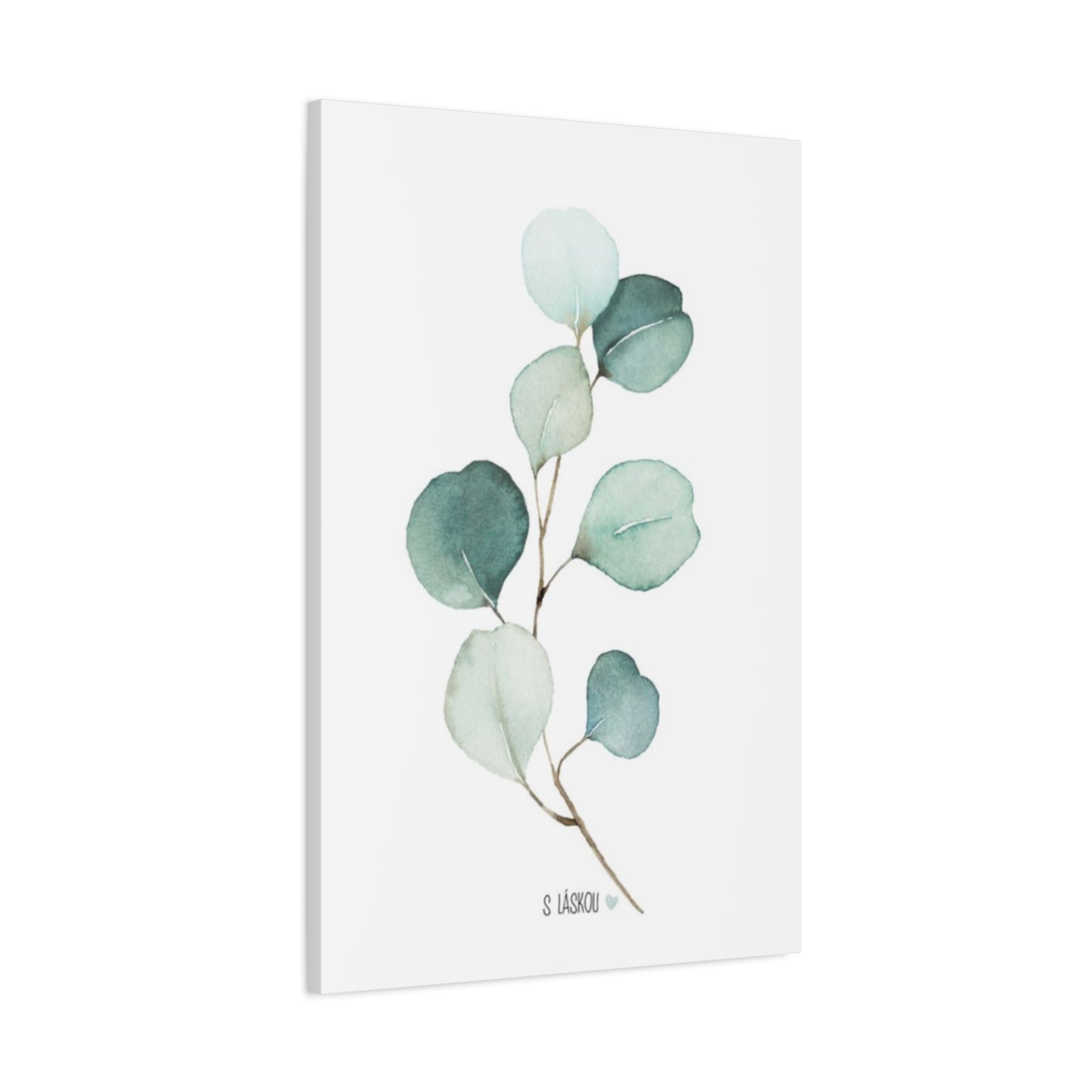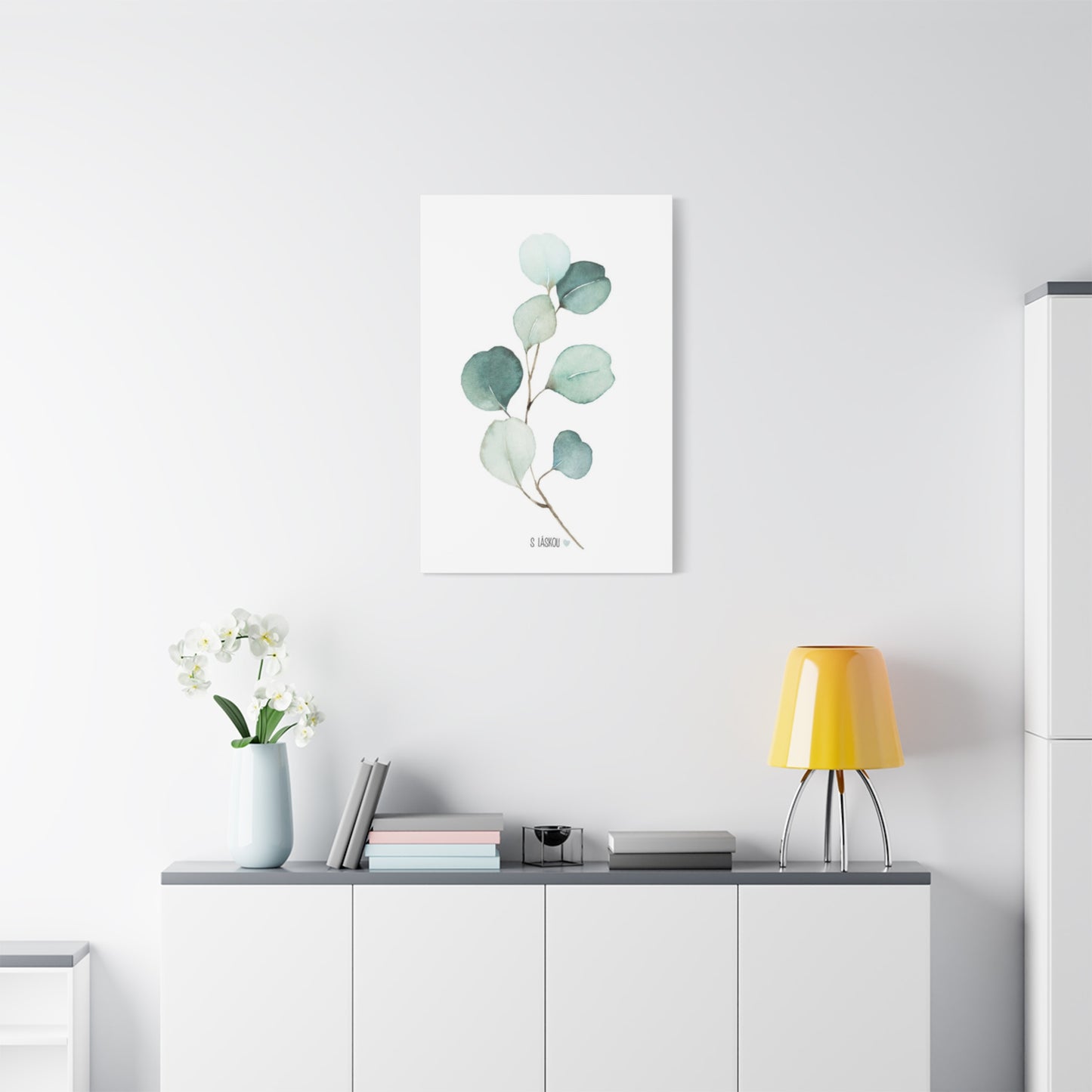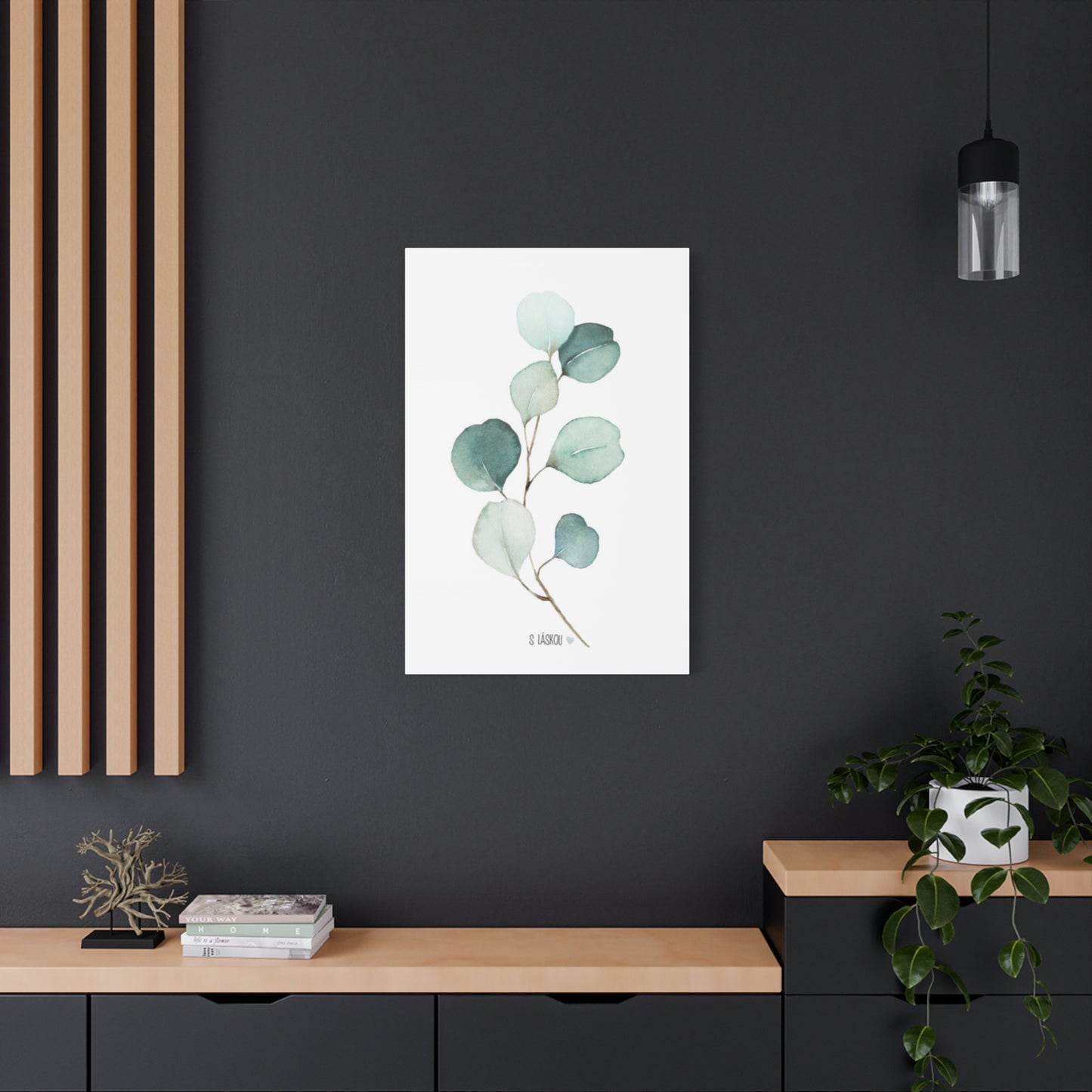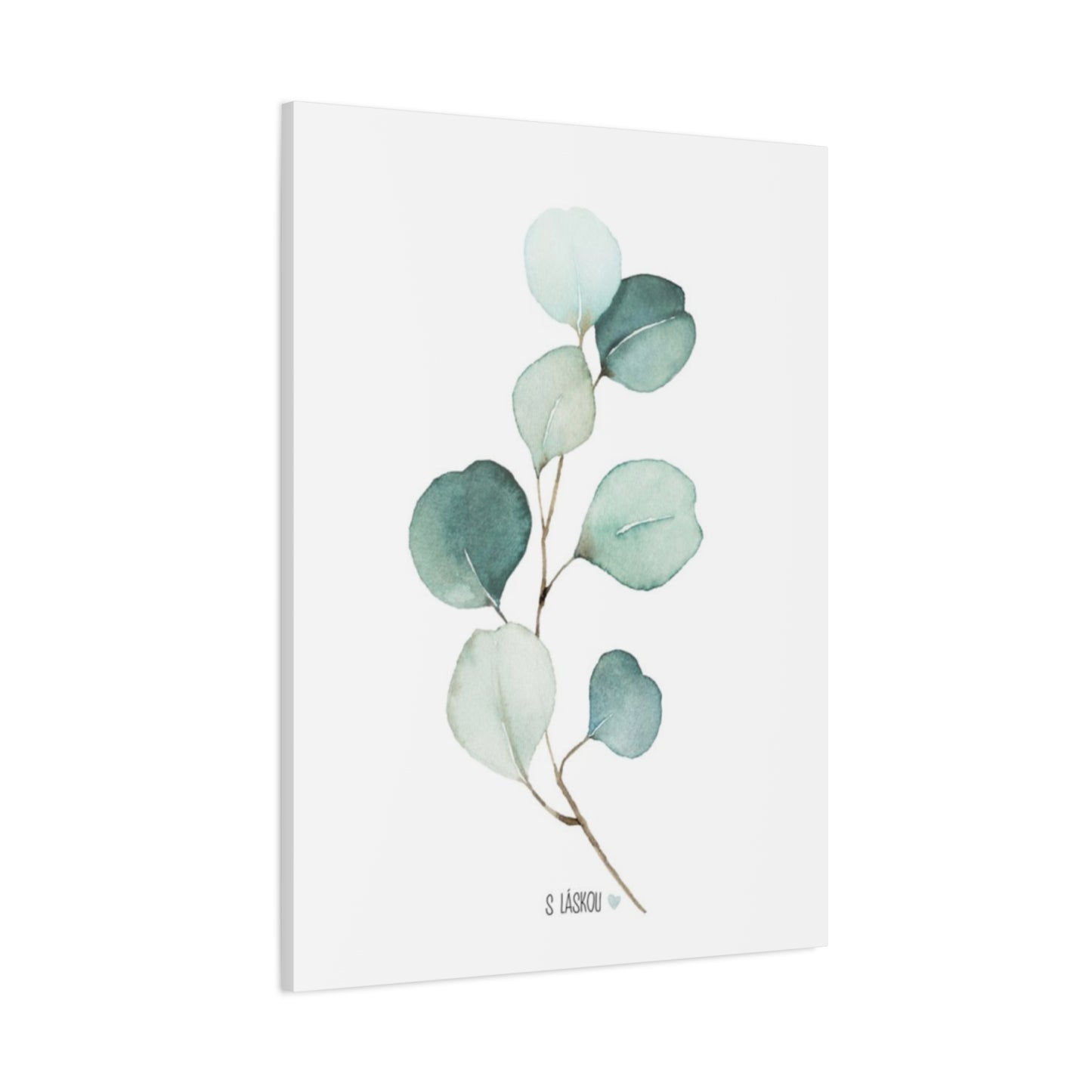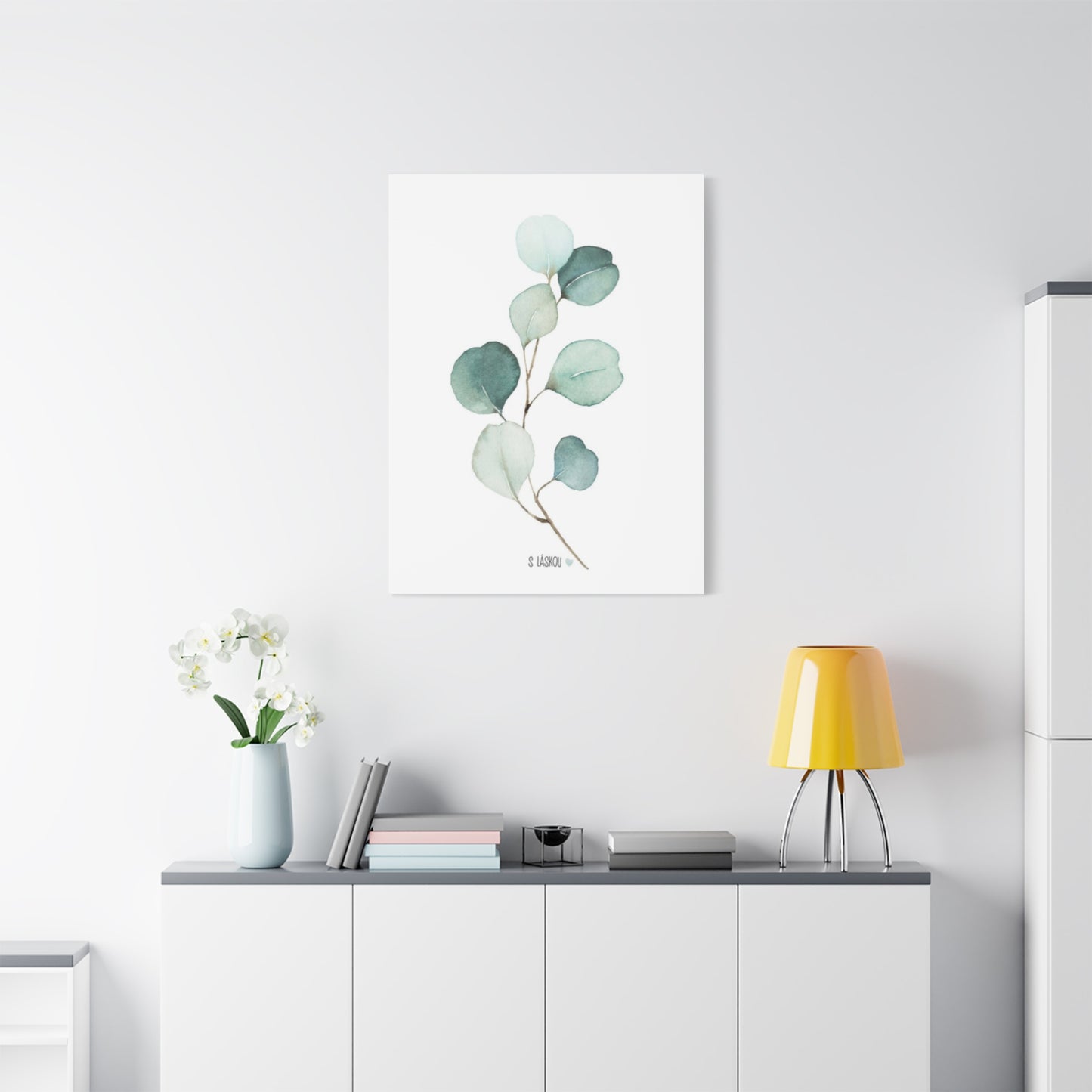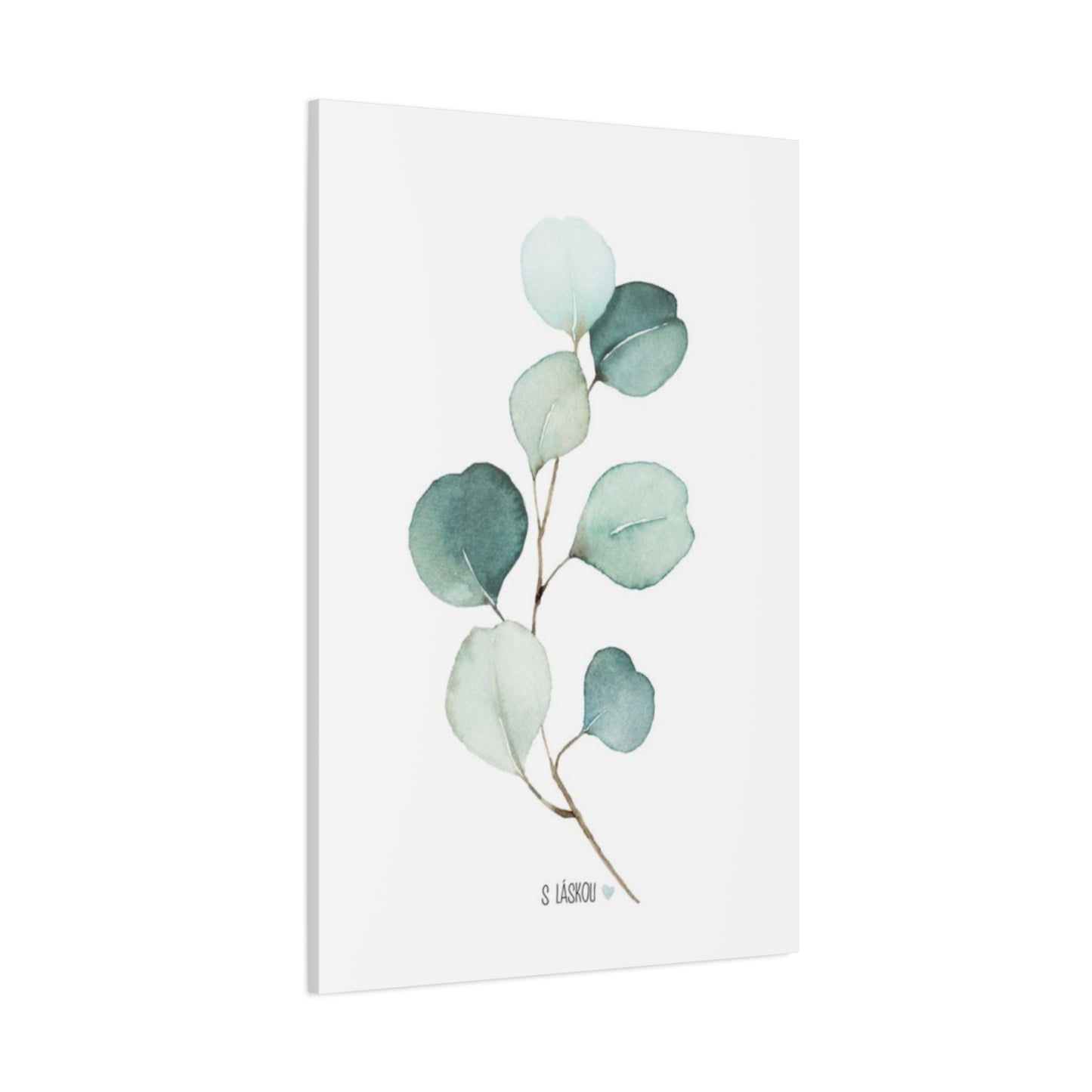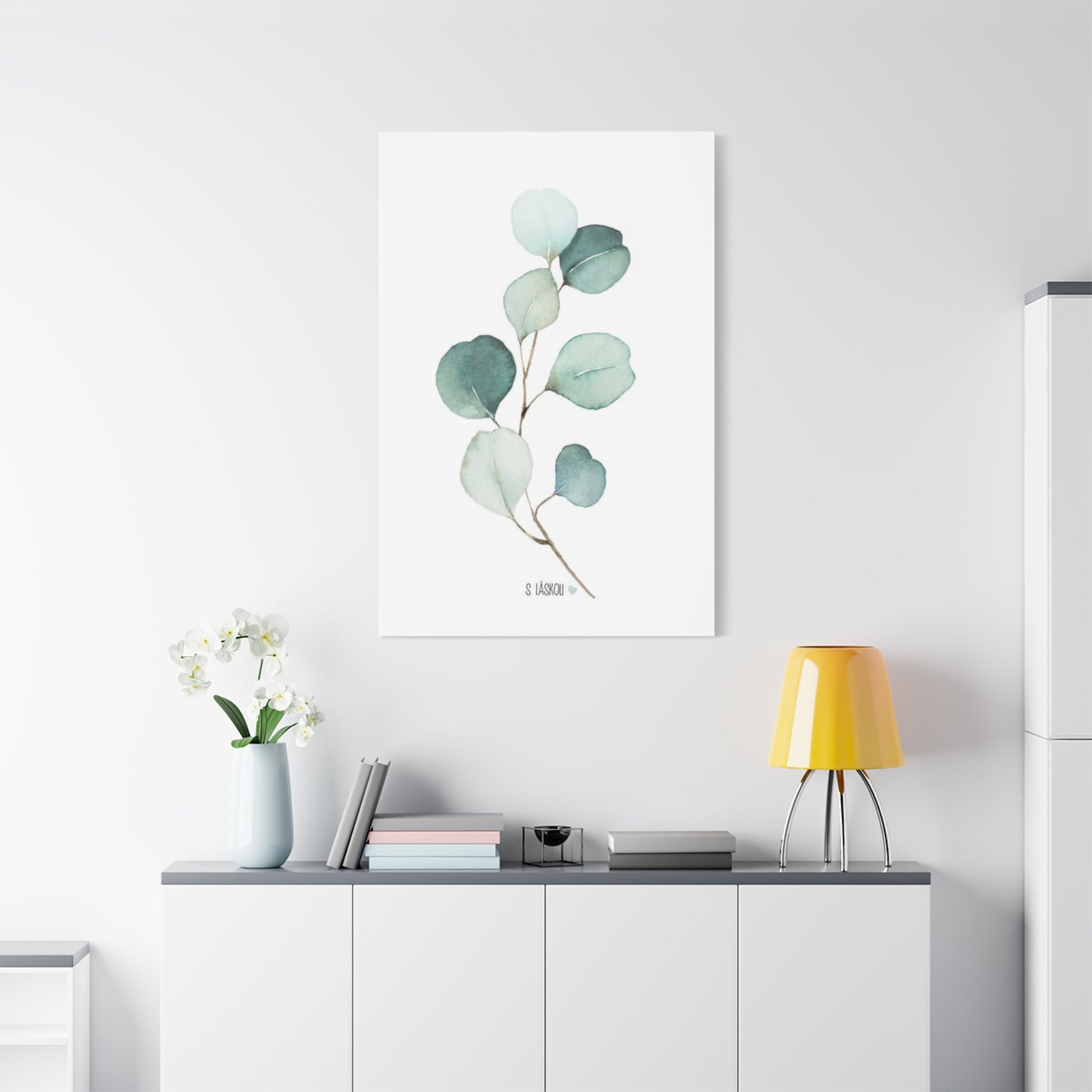The Beauty of Simplicity: Decorating with Small Eucalyptus Stem Wall Art
The world of interior design has witnessed a remarkable transformation in recent years, with natural elements taking center stage in creating peaceful and harmonious living spaces. Among the most sought-after design choices, eucalyptus themed artwork has emerged as a powerful tool for bringing the serenity of nature indoors. This comprehensive exploration delves into every aspect of incorporating these beautiful botanical elements into your home, offering insights that will help you create spaces that breathe tranquility and style.
Minimalist Eucalyptus Wall Art
The concept of simplicity in design has never been more relevant than in today's fast-paced world. Minimalist eucalyptus wall art represents the perfect marriage between aesthetic restraint and natural beauty, offering homeowners a way to introduce organic elements without overwhelming their spaces. This design philosophy embraces the principle that less is indeed more, focusing on clean lines, subtle colors, and uncluttered compositions that allow the inherent beauty of eucalyptus branches to shine through.
When selecting minimalist eucalyptus artwork, consider pieces that feature single stems or small clusters against neutral backgrounds. The beauty of this approach lies in its ability to create visual interest while maintaining a sense of calm. White, cream, or soft gray backgrounds work exceptionally well, allowing the silvery-green tones of eucalyptus leaves to become the focal point. These pieces typically employ negative space strategically, giving the eye room to rest and creating an atmosphere of spaciousness even in smaller rooms.
The versatility of minimalist eucalyptus art makes it suitable for virtually any room in your home. In bedrooms, these pieces promote relaxation and peaceful sleep. Living rooms benefit from their sophisticated yet approachable aesthetic, while home offices gain a touch of nature that can reduce stress and enhance productivity. The key to successful implementation lies in choosing the right size and placement, ensuring the artwork complements rather than competes with existing décor elements.
Contemporary minimalist design often incorporates eucalyptus imagery through various mediums, from simple line drawings to watercolor interpretations and high-quality photographic prints. Each medium brings its own character to the space. Line drawings offer an ultra-modern feel with their simplified representations, while watercolors introduce a softer, more organic quality. Photographic prints provide realistic detail that can make viewers feel as though they could reach out and touch the leaves.
Botanical Elegance on Canvas
Canvas as a medium brings a particular warmth and texture to botanical artwork that elevates it beyond simple prints. The woven surface of canvas adds depth and dimension, creating subtle shadows and highlights that change with the light throughout the day. This dynamic quality makes canvas-based eucalyptus art feel alive, shifting in appearance as natural and artificial light sources change position and intensity.
Botanical elegance on canvas encompasses a range of styles from hyper-realistic renderings to impressionistic interpretations. Each approach offers unique benefits for interior spaces. Realistic botanical canvases provide educational value alongside their aesthetic appeal, allowing viewers to appreciate the intricate details of eucalyptus leaves, including their distinctive shape, vein patterns, and the subtle color variations that make each specimen unique. These pieces work beautifully in spaces where you want to create a gallery-like atmosphere or showcase your appreciation for botanical accuracy.
Impressionistic or abstract interpretations of eucalyptus on canvas offer different advantages. They introduce color possibilities beyond the natural palette, allowing designers to coordinate with existing color schemes while maintaining the organic theme. Soft blues, muted purples, warm taupes, and various shades of green can all be incorporated, creating artwork that serves as both a natural element and a carefully chosen accent color within the room's design scheme.
The texture of canvas itself contributes significantly to the overall impact of botanical artwork. Gallery-wrapped canvases, where the image continues around the edges, eliminate the need for framing and create a modern, streamlined look. Alternatively, traditionally framed canvas pieces can introduce additional design elements through frame selection, allowing you to coordinate with other furnishings or architectural details. Float-mounting, where the canvas appears to hover within the frame, adds contemporary sophistication while maintaining focus on the botanical subject matter.
Small Eucalyptus Stem Prints
The charm of small-scale artwork often goes underappreciated in interior design discussions, yet these modest pieces can have tremendous impact when used thoughtfully. Small eucalyptus stem prints offer flexibility and affordability that larger pieces cannot match, making them ideal for creating gallery walls, filling awkward spaces, or experimenting with botanical themes before committing to larger investments.
These compact prints typically measure anywhere from five by seven inches to eleven by fourteen inches, making them perfect for creating visual interest in areas that might otherwise go undecorated. Narrow wall spaces beside doorways, small sections of wall between windows, the area above light switches, and compact bathroom walls all become opportunities for artistic expression. The intimate scale of these prints invites closer viewing, rewarding observers with details they might miss in larger, more commanding pieces.
Creating gallery walls with small eucalyptus stem prints allows for creative expression and personalization. You might arrange multiple prints in geometric patterns for a structured, modern look, or create organic, asymmetrical arrangements that feel more relaxed and spontaneous. Mixing different eucalyptus varieties shown in various stages of growth adds visual interest while maintaining thematic coherence. Some designers incorporate small eucalyptus prints alongside complementary botanical subjects like olive branches, lavender sprigs, or delicate ferns, building a comprehensive nature-inspired gallery.
The affordability of small prints makes them accessible to budget-conscious decorators and allows for seasonal rotation. You might display certain eucalyptus prints during particular times of year, swapping them for other botanical subjects as seasons change. This flexibility keeps your space feeling fresh and allows your décor to evolve with your tastes without significant financial investment. Additionally, small prints make excellent starting points for those new to botanical décor, offering a low-risk way to test whether this aesthetic resonates with your personal style.
Calm Greenery for Modern Walls
Modern interior design increasingly recognizes the psychological benefits of incorporating natural elements into living spaces. Calm greenery serves as more than mere decoration; it functions as a tool for creating environments that support mental wellbeing, reduce stress, and promote feelings of peace and connection to the natural world. Eucalyptus artwork, with its soothing color palette and organic forms, excels at fulfilling this role.
The color green itself carries significant psychological weight. Studies in environmental psychology have consistently shown that exposure to green hues can lower blood pressure, reduce anxiety, and improve overall mood. The particular shade of green found in eucalyptus leaves occupies a sweet spot in the spectrum, neither so vibrant as to feel energizing nor so dark as to feel heavy. This balanced, silvery-green tone creates a sense of calm without inducing drowsiness, making it ideal for spaces where you want to feel both relaxed and alert.
Modern walls benefit from calm greenery in numerous ways. In open-concept living spaces, eucalyptus artwork can help define different zones without requiring physical barriers. A large eucalyptus canvas above a sofa delineates the conversation area, while smaller prints in the dining space create visual separation. The organic subject matter provides continuity that helps these distinct areas feel connected rather than fragmented, maintaining the open, flowing quality that makes modern floor plans so appealing.
Textured walls, increasingly popular in contemporary design, pair beautifully with eucalyptus artwork. The smooth, simplified forms of eucalyptus branches and leaves provide pleasing contrast against rough plaster, exposed brick, or board-and-batten treatments. This interplay between organic subject matter and architectural texture adds layers of visual interest without creating chaos, a hallmark of successful modern design. The key lies in balancing these elements, ensuring neither the wall treatment nor the artwork overwhelms the other.
Nature-Inspired Canvas Décor
Drawing inspiration from the natural world for interior design creates spaces that feel inherently comfortable and welcoming. Nature-inspired canvas décor extends beyond simple reproduction of natural subjects to encompass artwork that captures the essence, feeling, and spirit of the outdoors. Eucalyptus serves as an ideal subject for this approach, offering recognizable natural forms that translate beautifully to artistic interpretation.
When selecting nature-inspired canvas pieces featuring eucalyptus, consider how the artist has approached their subject. Some artists focus on botanical accuracy, creating scientifically precise renderings that could serve in botanical journals. Others take a more emotional or impressionistic approach, using eucalyptus as a starting point for exploring color, form, and feeling. Neither approach is inherently superior; the right choice depends on your space, existing décor, and personal preferences.
The placement of nature-inspired canvas décor significantly influences its impact. In spaces designed for relaxation, such as bedrooms and reading nooks, positioning eucalyptus artwork at eye level when seated creates an intimate connection with the piece. You see it during moments of rest, allowing its calming influence to work more effectively. In more active spaces like kitchens and hallways, hanging artwork slightly higher accommodates standing viewers and prevents the pieces from interfering with practical activities.
Lighting plays a crucial role in showcasing nature-inspired canvas art. Natural light brings out the subtle color variations in eucalyptus imagery, making the silvery-green tones shimmer and shift throughout the day. However, direct sunlight can cause fading over time, so positioning pieces where they receive indirect natural light offers the best of both worlds. For spaces with limited natural light, installing picture lights or track lighting allows you to highlight your eucalyptus canvas décor effectively, creating focal points that draw the eye and anchor the room's design.
Eucalyptus Art for Cozy Homes
Creating a cozy home environment involves more than just comfortable furniture and soft textiles. The artwork you choose contributes significantly to the overall atmosphere, either supporting or undermining your efforts to create a warm, inviting space. Eucalyptus art brings natural warmth and organic beauty that enhances coziness without sacrificing style or sophistication.
The inherent qualities of eucalyptus imagery lend themselves perfectly to cozy aesthetics. The soft, rounded leaves create gentle visual rhythms that feel comfortable and non-threatening. The muted color palette avoids harsh contrasts, maintaining a sense of harmony that allows other design elements to shine. The organic, irregular growth patterns of eucalyptus branches introduce visual interest without geometric severity, contributing to the relaxed, unpretentious feeling that defines truly cozy spaces.
In cottages, farmhouses, and other traditionally cozy architectural styles, eucalyptus artwork bridges the gap between rustic charm and contemporary sensibility. Pairing eucalyptus prints with vintage frames creates a collected-over-time appearance that feels authentic and personal. Mixing eucalyptus artwork with other natural elements like woven baskets, wooden furniture, and linen textiles builds a cohesive nature-inspired scheme that feels intentional without appearing overly designed.
Scale considerations become particularly important in cozy spaces, which tend to be smaller and more intimate than formal living areas. Oversized artwork can overwhelm a cozy room, making it feel cramped rather than comfortable. Instead, opt for medium-sized pieces or collections of smaller prints that provide visual interest without dominating the space. The goal is creating a layered, collected aesthetic where each element contributes to the overall feeling without demanding all the attention.
Botanical Simplicity in Wall Prints
The philosophy of simplicity in design recognizes that removing unnecessary elements often strengthens rather than weakens the final result. Botanical simplicity in wall prints applies this principle to nature-inspired artwork, focusing on essential forms and eliminating distracting details. This approach creates prints that feel timeless, versatile, and endlessly appealing.
Simple botanical prints featuring eucalyptus typically employ clean compositions with minimal background elements. A single stem might be shown against a pure white background, or a small cluster of leaves might float in neutral space. This editing process directs attention to the plant itself, allowing viewers to appreciate its natural beauty without distraction. The result is artwork that works in diverse settings, from ultramodern lofts to traditional homes, because it doesn't carry strong stylistic signals that might clash with existing décor.
The printing process and paper quality significantly impact the final appearance of simple botanical prints. High-quality digital prints on archival paper ensure longevity and color accuracy, important considerations for artwork you plan to display long-term. Matte finishes generally work better for botanical subjects than glossy alternatives, as they avoid reflections that can obscure details and create viewing difficulties depending on lighting conditions and viewing angles.
Framing simple botanical prints offers an opportunity to either maintain the minimalist aesthetic or introduce additional design elements. Simple frames in natural wood, black, or white maintain focus on the botanical subject, allowing the eucalyptus imagery to remain the star. More ornate frames can transform simple prints into formal statements, suitable for traditional interiors or spaces where you want to create contrast between classic framing and contemporary subject matter. The choice depends entirely on your overall design goals and the aesthetic you're working to achieve.
Small Green Stems on Canvas
The delicate beauty of small green stems captured on canvas offers a particular kind of charm that resonates with viewers seeking subtle, understated décor. These pieces celebrate the modest beauty of individual plant elements rather than grand floral displays, reflecting a growing appreciation for simplicity and authenticity in home design. Small eucalyptus stems, with their distinctive rounded leaves and elegant growth patterns, translate beautifully to this format.
Canvas treatments for small stem imagery can vary significantly in style and technique. Some artists use precise, detailed approaches that capture every texture and color variation, creating pieces that reward close inspection. Others employ looser, more painterly techniques that suggest rather than define, leaving room for viewer interpretation and imagination. Both approaches have merit, and choosing between them depends on whether you prefer artwork that provides answers or asks questions.
The intimacy of small stem imagery makes these canvases particularly suitable for personal spaces like bedrooms, dressing areas, and small home offices. These rooms benefit from artwork that doesn't demand attention but offers quiet companionship and subtle beauty. A canvas showing a single eucalyptus stem on a nightstand wall creates a serene focal point that supports rather than interferes with the room's primary function as a place of rest and restoration.
Grouping multiple small stem canvases creates interesting compositional possibilities. You might arrange several pieces showing different eucalyptus varieties in a horizontal line, creating a frieze-like display that draws the eye along the wall. Vertical stacking produces a different effect, adding perceived height to rooms with low ceilings. Asymmetrical groupings feel more organic and less formal, suitable for casual spaces where you want artwork to feel discovered rather than deliberately placed.
Minimal Wall Décor with Eucalyptus
Minimalism as a design philosophy extends far beyond simple aesthetics to encompass a lifestyle approach that values quality over quantity and space over clutter. Minimal wall décor with eucalyptus embraces these principles, using carefully selected pieces to create maximum impact with minimum visual noise. This approach proves particularly effective in modern and contemporary interiors where clean lines and uncluttered surfaces take precedence.
The key to successful minimal wall décor lies in curation and restraint. Rather than covering every available wall surface with artwork, minimalism suggests selecting a few exceptional pieces and giving them space to breathe. A single large eucalyptus canvas on an otherwise empty wall creates a powerful statement that would be diluted by additional elements. The negative space around the artwork becomes part of the composition, contributing to the overall sense of calm and order.
Color palettes in minimal eucalyptus décor typically favor neutrals and near-neutrals, allowing the natural green tones of the plant to provide the primary color interest. Backgrounds in white, cream, soft gray, or pale beige ensure the eucalyptus remains the focus while maintaining the light, airy quality essential to minimalist aesthetics. Occasional use of deeper tones like charcoal or navy can provide drama without abandoning minimalist principles, as long as these darker elements are used sparingly and deliberately.
Furniture and accessory choices should support your minimal eucalyptus wall décor rather than compete with it. Streamlined furniture with clean lines echoes the simplicity of minimal botanical artwork, creating visual harmony throughout the space. Limiting accessories to a few carefully chosen items prevents the clutter that undermines minimalist goals. Each element in the room should earn its place by contributing meaningfully to the overall design, with nothing included merely for the sake of filling space.
Nature's Beauty Captured in Art
The impulse to capture and preserve natural beauty drives much of art history, from cave paintings depicting animals to contemporary photography celebrating landscapes. Eucalyptus artwork continues this tradition, offering ways to bring the outdoors inside and maintain connection with the natural world despite increasingly urban and indoor-focused lifestyles. This connection carries genuine benefits for wellbeing, creativity, and overall quality of life.
Different artistic mediums capture eucalyptus beauty in distinct ways, each offering unique advantages. Watercolor paintings emphasize the delicate, ephemeral quality of leaves and stems, their transparent layers echoing the way light filters through foliage. Oil paintings provide richness and depth, building up colors and textures that create almost tangible presence. Photography captures specific moments in time, preserving particular lighting conditions, growth stages, and natural arrangements that can never be exactly replicated.
The artist's perspective significantly influences how nature's beauty is captured and presented. A botanist-artist brings scientific understanding to their work, ensuring accurate representation of plant structures and characteristics. A purely aesthetic approach prioritizes visual appeal over accuracy, potentially taking liberties with color, proportion, or form to achieve desired effects. Neither approach is inherently better; they simply serve different purposes and appeal to different sensibilities.
Displaying nature-inspired eucalyptus art creates opportunities for daily connection with the natural world, particularly valuable for urban dwellers with limited access to green spaces. Starting your day looking at botanical artwork can set a calm, centered tone that carries through subsequent hours. Taking breaks to appreciate eucalyptus imagery during work provides mental respite and helps maintain perspective during stressful periods. Ending your day with time spent appreciating natural beauty captured in art supports relaxation and quality sleep.
Eucalyptus Wall Prints for Interiors
Interior design balances numerous considerations including function, aesthetics, budget, and personal expression. Eucalyptus wall prints offer solutions across all these areas, providing beautiful, affordable artwork that enhances virtually any interior style. Understanding how to select and implement these prints effectively ensures they contribute positively to your overall design scheme rather than feeling like afterthoughts or mistakes.
Room function should guide your eucalyptus print selections. Active spaces like kitchens and entryways benefit from durable prints that can withstand occasional contact and cleaning. Quiet spaces like bedrooms and meditation areas call for pieces with particularly calming color palettes and compositions. Workspaces including home offices need artwork that promotes focus without causing distraction, making simple, uncluttered eucalyptus prints ideal choices.
Print size relationships matter significantly in creating balanced, harmonious interiors. A tiny print on a large empty wall looks lost and insignificant, while an oversized piece in a small room feels overwhelming and oppressive. General guidelines suggest artwork should occupy roughly two-thirds to three-quarters the width of furniture pieces it hangs above, though creative rules-breaking can produce interesting results when done intentionally. Multiple smaller prints can be grouped to fill the same visual space as a single large piece, offering flexibility in arrangement and the ability to adjust your display over time.
Mixing eucalyptus prints with other artwork types prevents monotony while maintaining thematic coherence. Pairing botanical prints with abstract pieces in complementary colors creates interesting dialogue between representational and non-representational art. Combining eucalyptus imagery with other nature subjects like landscapes, seascapes, or wildlife builds a comprehensive nature-inspired gallery. The key is finding balance, ensuring variety doesn't devolve into randomness and cohesion doesn't become boring uniformity.
Fresh Greenery Canvas for Homes
Freshness in interior design creates spaces that feel vibrant, alive, and welcoming. Fresh greenery canvas artwork delivers these qualities through both literal representation of living plants and the psychological associations greenery carries. Unlike real plants that require maintenance and can suffer from neglect or unfavorable conditions, canvas eucalyptus provides permanent freshness that never wilts, browns, or requires watering.
The visual freshness of greenery canvas comes partly from color choices and partly from composition. Bright, clear greens suggest spring growth and vitality, while silvery or sage tones feel more mature and sophisticated. Compositions showing new growth with unfurling leaves emphasize freshness more than those depicting fully mature specimens. Your choice depends on the specific quality you want to bring to your space and how it coordinates with existing color schemes and design elements.
Seasonal rotation of artwork can maintain a sense of freshness throughout the year. During spring and summer, vibrant eucalyptus canvases reinforce the season's natural energy. In fall and winter, switching to pieces with slightly muted tones or showing eucalyptus in mature stages creates better harmony with the outdoor environment. This practice prevents visual disconnection between indoor and outdoor spaces while keeping your décor feeling current and intentional.
Fresh greenery canvas works particularly well in spaces that lack access to natural light or outdoor views. Basement rooms, interior bathrooms, and windowless offices all benefit from eucalyptus artwork that provides visual connection to nature otherwise unavailable. In these situations, the artwork serves a compensatory function, helping occupants feel less isolated from the natural world despite physical circumstances that limit direct exposure.
Small Botanical Scenes on Canvas
The appeal of small botanical scenes lies in their ability to create intimate, detailed worlds that invite extended contemplation. Unlike grand landscape paintings that present sweeping vistas, small botanical canvases focus on modest subjects presented with care and attention. Eucalyptus lends itself beautifully to this treatment, as individual stems and leaf clusters contain enough visual interest to sustain viewer attention despite their humble scale.
Creating small botanical scenes requires artistic restraint and careful editing. Too many elements create confusion and undermine the intimate quality that makes these pieces special. Most successful small botanical canvases feature one to three main elements arranged in simple, balanced compositions. Negative space plays a crucial role, giving the eye places to rest and preventing the cramped feeling that can result from trying to pack too much information into limited space.
Display strategies for small botanical canvases differ from those used for larger artwork. These pieces often work best in multiples, creating collections or grid arrangements that allow individual canvases to maintain their intimate character while collectively making stronger visual statements. Arranging small eucalyptus canvases in sets of three, four, or six provides structure while maintaining flexibility. Odd-numbered groupings feel slightly more dynamic and organic, while even numbers create more formal, balanced appearances.
Lighting considerations become particularly important with small canvases, as insufficient illumination can cause them to disappear into walls rather than serving as visual focal points. Dedicated picture lights, carefully positioned track lighting, or even nearby lamps can ensure small botanical scenes receive attention they deserve. The goal is making these intimate pieces visible and appreciable without overilluminating them to the point where the viewing experience becomes uncomfortable or unnatural.
Modern Minimalist Greenery Art
Modern minimalist aesthetics have dominated interior design trends for years, and their influence shows no signs of waning. This enduring appeal stems from minimalism's ability to create calm, ordered environments that feel spacious and uncluttered despite increasingly dense urban living conditions. Modern minimalist greenery art combines these design principles with natural elements, resulting in pieces that satisfy both aesthetic preferences and psychological needs for nature connection.
The formal characteristics of modern minimalist greenery art include simplified forms, limited color palettes, and generous negative space. A minimalist eucalyptus piece might show a single stem rendered in simple lines against a white background, or several leaves arranged in geometric patterns that emphasize shape over detail. These reductive approaches require viewers to engage more actively with the artwork, filling in details and forming interpretations based on the limited information provided.
Material choices support minimalist aesthetics when they favor quality over decoration. Simple frames in natural materials like wood or metal work better than ornate alternatives. Canvas prints without frames, where the image wraps around gallery-style edges, eliminate unnecessary elements while creating clean, contemporary presentations. Acrylic or plexiglass mounting creates floating effects that feel particularly modern and minimalist, though these approaches typically involve higher costs than traditional framing methods.
Modern minimalist greenery art serves practical functions beyond mere decoration. In small apartments and compact living spaces, these pieces provide visual interest without consuming physical space or creating clutter. Their simple forms and neutral colors avoid overwhelming small rooms while still offering the psychological benefits of nature imagery. The versatility of minimalist eucalyptus art means pieces selected for one space can easily transition to others as living situations or design preferences change.
Eucalyptus Stems for Calm Spaces
Calm spaces serve essential functions in contemporary life, providing refuge from constant stimulation and demanding schedules. Creating such spaces requires attention to every design element, including wall décor. Eucalyptus stem artwork contributes to calm environments through its gentle visual qualities, natural associations, and inherent simplicity, making it an ideal choice for meditation rooms, reading nooks, bedrooms, and other areas designed for relaxation and restoration.
The psychological mechanisms through which eucalyptus imagery promotes calm involve both learned associations and innate responses. Culturally, we associate plants with growth, health, and natural environments away from urban stress. These learned connections trigger relaxation responses when we encounter botanical imagery. Additionally, the soft curves and organic forms found in eucalyptus stems activate innate preferences for natural shapes, preferences that likely evolved because environments rich in vegetation historically provided resources and safety.
Color plays a significant role in the calming effect of eucalyptus artwork. The muted, silvery-green tones characteristic of many eucalyptus varieties sit in the cooler portion of the color spectrum, which generally promotes relaxation more effectively than warm colors. These greens avoid the excessive vibrancy that can feel energizing or even agitating, instead offering gentle visual stimulation that satisfies the need for sensory input without overwhelming the nervous system.
Combining eucalyptus stem artwork with other calming design elements creates synergistic effects that exceed what any single element could achieve alone. Soft textiles in natural fibers, warm wood tones, gentle lighting, and minimal clutter all support the calming influence of botanical artwork. Scent elements like eucalyptus essential oils in diffusers create multisensory experiences that deepen the sense of tranquility. The goal is crafting comprehensive calm environments where every element contributes to the overall atmosphere.
Nature-Inspired Wall Décor Ideas
Drawing inspiration from nature for wall décor opens vast creative possibilities beyond simple plant portraits. Nature-inspired approaches might incorporate eucalyptus in unexpected ways, combine botanical elements with other natural subjects, or use nature as a jumping-off point for more abstract or conceptual work. This expansive interpretation of nature-inspired décor allows for highly personalized spaces that reflect individual relationships with the natural world.
One approach involves creating seasonal nature galleries that change throughout the year. Spring displays might emphasize new eucalyptus growth with vibrant greens and delicate stems. Summer arrangements could incorporate fuller, more mature specimens. Fall galleries might feature eucalyptus in deeper, more muted tones paired with seed pods or dried elements. Winter displays could focus on eucalyptus's architectural qualities, emphasizing structure over color. This rotating approach keeps spaces feeling fresh and maintains engagement with your wall décor throughout the year.
Combining eucalyptus with complementary natural elements creates richer, more complex nature narratives. Pairing eucalyptus prints with stones, shells, or driftwood pieces on floating shelves builds three-dimensional nature displays that engage viewers more fully than flat artwork alone. Incorporating preserved eucalyptus stems in vases near related artwork creates dialogue between representation and reality, blurring lines between décor categories in interesting ways.
Scale variations add visual interest to nature-inspired walls. Mixing large eucalyptus canvases with smaller prints in gallery arrangements creates dynamic compositions with varied rhythm and emphasis. Combining detailed close-ups showing eucalyptus leaf textures with wider shots depicting whole branches or clusters provides different perspectives on the same subject, encouraging viewers to consider eucalyptus from multiple viewpoints. These varied approaches to a single botanical subject demonstrate its richness and complexity while maintaining thematic unity.
Botanical Prints for Tranquil Walls
Tranquility in interior spaces doesn't happen by accident; it results from careful choices across all design elements. Botanical prints contribute to tranquil walls through their subject matter, color palettes, and compositional qualities. Eucalyptus-themed prints particularly excel at creating peaceful environments due to the plant's inherent visual gentleness and cultural associations with relaxation and healing.
Print selection for tranquil spaces should prioritize simplicity and clarity over complexity and busyness. Compositions with clean, uncluttered arrangements communicate more effectively than those packed with competing elements. Single eucalyptus stems or small, carefully arranged clusters work better than dense groupings that might feel chaotic or overwhelming. Background choices matter significantly, with soft, neutral tones supporting tranquility more effectively than stark contrasts or vivid colors.
Arrangement strategies for tranquil walls favor balance and symmetry, though not necessarily in strictly formal ways. Symmetrical arrangements of matched eucalyptus prints flanking architectural elements like fireplaces or windows create restful order. Asymmetrical but visually balanced arrangements feel more organic while still providing the sense of order essential to tranquility. The key is avoiding arrangements that feel random or chaotic, which can trigger low-level stress responses that undermine tranquil intentions.
Integrating botanical prints into broader tranquility-focused design schemes requires attention to how all elements work together. Wall color should support rather than compete with print selections, typically meaning soft, neutral tones that recede rather than advance. Furniture should maintain the calm aesthetic through clean lines and natural materials. Accessories should be limited to essential, meaningful pieces rather than accumulated clutter. Lighting should be adjustable to accommodate different activities and times of day while avoiding harsh overhead fixtures that create uncomfortable environments.
Small Eucalyptus Canvas Inspiration
Finding inspiration for incorporating small eucalyptus canvases into your home requires considering both practical and aesthetic dimensions. These modest pieces offer tremendous flexibility, working in spaces and situations where larger artwork might feel inappropriate or overwhelming. Understanding the range of possibilities helps you envision creative applications you might not have otherwise considered.
Unexpected placement opportunities for small eucalyptus canvases include spaces typically overlooked in décor planning. The wall space inside linen closets, visible when doors stand open, can display small botanical pieces that transform mundane storage into delightful discoveries. Bathroom medicine cabinets with interior backing provide opportunities for tiny canvases that surprise and please during daily routines. Small walls in stairwells, often ignored because they seem too modest for artwork, become perfect showcases for small eucalyptus pieces that create visual interest throughout vertical circulation paths.
Themed collections of small eucalyptus canvases allow for storytelling through décor. You might collect pieces showing different eucalyptus varieties, creating an educational display that celebrates botanical diversity. Chronological collections showing eucalyptus growth stages from new shoots to mature branches tell developmental stories. Seasonal collections capturing eucalyptus in different times of year or lighting conditions demonstrate how single subjects transform through changing circumstances. These thematic approaches turn wall décor into narratives that engage viewers more deeply than random assemblages.
Small eucalyptus canvases serve practical functions beyond decoration. In children's rooms, they introduce nature appreciation and aesthetic awareness from early ages. In elderly care environments, they provide gentle visual interest without demanding excessive processing that might cause confusion or agitation. In commercial spaces like small offices, boutiques, or wellness centers, they communicate attention to detail and create welcoming atmospheres that larger, more expensive pieces might achieve but with significantly higher investment.
Minimalist Green Wall Art Prints
The intersection of minimalism and nature-inspired design produces particularly harmonious results, as both philosophies emphasize essence over excess. Minimalist green wall art prints featuring eucalyptus distill botanical subjects to their fundamental visual elements, creating pieces that feel simultaneously contemporary and timeless. This aesthetic approach suits diverse spaces and design styles, from ultra-modern urban lofts to renovated historic homes seeking updated décor.
Technical execution in minimalist green prints often employs limited color palettes, sometimes working in near-monochromatic ranges that explore subtle variations within green families. A print might use only three or four distinct shades, creating depth and interest through value and tone rather than dramatic color contrasts. This restraint produces sophisticated results that avoid the potentially dated appearance of more complex color schemes, ensuring your wall art maintains appeal for years without feeling tied to specific design trends.
The relationship between figure and ground in minimalist prints deserves careful consideration. In some pieces, eucalyptus elements occupy minimal space, floating in expansive neutral backgrounds. This approach emphasizes the negative space as an active design element rather than mere absence of content. Other prints feature eucalyptus more prominently while maintaining minimalist sensibility through simplified rendering and limited detail. Neither approach is inherently superior; effectiveness depends on your specific space and how the artwork relates to surrounding elements.
Minimalist green wall art prints pair particularly well with natural materials and textures in furnishings and architectural elements. Wood furniture in light or medium tones creates warm contrast against the cool greens of eucalyptus imagery. Linen textiles in neutral colors echo the organic quality of botanical subjects while maintaining minimalist simplicity. Stone or concrete surfaces provide textural interest that complements smooth print surfaces. The goal is building material conversations where each element maintains its distinct character while contributing to overall aesthetic harmony.
Fresh and Calm Canvas Art
The combination of freshness and calm might seem contradictory, as freshness often implies energy and vitality while calm suggests stillness and rest. However, eucalyptus canvas art achieves both qualities simultaneously, creating pieces that feel alive and peaceful at once. This dual nature makes such artwork particularly valuable in contemporary homes where residents seek environments that support both productive activity and restorative rest.
Achieving visual freshness in canvas art involves several technical considerations. Color saturation plays a crucial role, with moderately saturated greens feeling fresher than either extremely vivid or heavily grayed tones. Crisp edges and clear definition contribute to perceived freshness, even in pieces that aren't photorealistic. Compositions suggesting growth or movement feel fresher than static arrangements, though this dynamism should remain subtle to maintain calm qualities.
The calming aspects of eucalyptus canvas art stem from different sources than freshness. Soft color transitions without harsh contrasts promote visual calm. Balanced, symmetrical compositions feel more restful than dynamic, asymmetrical arrangements. Simplified forms with minimal detail allow the eye to process images easily without extended effort. These calming elements can coexist with freshness when balanced thoughtfully, creating artwork that energizes without agitating and relaxes without sedating.
Placement decisions for fresh and calm canvas art should consider how different spaces will benefit from these dual qualities. Morning spaces like breakfast nooks and home offices benefit from the energizing freshness that helps start the day positively. Evening spaces like bedrooms and relaxation areas benefit more from calming aspects that support unwinding and rest. Transitional spaces like hallways might display pieces that balance both qualities equally, creating environments that work throughout the day without favoring particular times or activities.
Timeless Appeal of Eucalyptus in Interior Design
Eucalyptus has transcended temporary trend status to become a permanent fixture in thoughtful interior design. This enduring appeal stems from several factors including the plant's inherent beauty, its versatility across design styles, and its meaningful associations with wellness and natural living. Understanding why eucalyptus maintains relevance despite changing fashion helps designers and homeowners make confident choices that will remain satisfying for years.
The visual characteristics that make eucalyptus timelessly appealing include its distinctive leaf shape, versatile color palette, and elegant growth patterns. The rounded leaves possess geometric interest without rigid formality, creating shapes that feel both structured and organic. The silvery-green color common to many eucalyptus varieties works across seasonal and style changes, coordinating with warm and cool palettes equally well. The graceful arch of eucalyptus branches introduces gentle curves that soften spaces without frilly excess.
Final Thoughts
Embracing the beauty of simplicity in home decor is a timeless approach that transcends trends and seasons. Small eucalyptus stem wall art embodies this principle perfectly, offering a subtle yet impactful way to enhance any living space. As we’ve explored, these delicate, nature-inspired pieces bring a quiet elegance that complements a wide variety of interior styles — from modern minimalist to rustic farmhouse. In reflecting on the allure of eucalyptus stem wall art, it becomes clear why it continues to be a beloved choice for those seeking to create calming, inviting environments.
One of the most compelling aspects of decorating with small eucalyptus stems is their ability to evoke nature’s tranquility indoors. In an age where busy lifestyles and digital overload are commonplace, incorporating natural elements helps restore a sense of peace and mindfulness. The gentle green hues and soft texture of eucalyptus leaves provide a refreshing contrast to stark walls and bold furniture, inviting calm and relaxation. Unlike larger or more ornate artworks, small eucalyptus stem pieces don’t overwhelm a room. Instead, they add just the right touch of nature’s charm, creating harmony and balance.
Simplicity is the essence of their appeal. Rather than relying on complex designs or vivid colors, eucalyptus wall art embraces restraint and subtlety. This minimalistic quality makes it incredibly versatile, allowing it to blend seamlessly with existing decor rather than compete with it. Whether hung in a cozy reading nook, above a kitchen counter, or as part of a gallery wall, these small art pieces work as gentle accents that enhance rather than distract. Their understated presence allows homeowners to experiment with texture and shape without feeling cluttered or overdone.
Another advantage of small eucalyptus stem wall art is its accessibility. Unlike expensive or hard-to-find pieces, eucalyptus decor is affordable and easy to source — whether fresh, dried, or crafted as delicate prints or paintings. This means anyone can introduce a touch of natural elegance into their home without a significant investment or complex installation. The lightweight nature of small eucalyptus pieces also makes them easy to reposition or switch out with the seasons, enabling dynamic yet effortless decorating that adapts to changing moods or trends.
Furthermore, decorating with eucalyptus reflects a broader appreciation for sustainability and eco-conscious living. Many eucalyptus products are biodegradable or sourced from responsibly managed growers, aligning with environmentally friendly values. Choosing such decor sends a subtle but meaningful message about mindfulness toward nature — both in the home and beyond. It encourages thoughtful consumption and a shift away from mass-produced, disposable items toward timeless, meaningful design choices.
It’s also worth noting the emotional benefits that come with surrounding oneself with elements of nature. Research consistently shows that natural decor, including greenery and botanical art, contributes to improved mood, reduced stress, and greater creativity. Small eucalyptus stem wall art, while modest in scale, can have a powerful impact on well-being by fostering a connection to the outdoors, even within the confines of urban living. This connection supports a holistic approach to interior design — one that nurtures not just aesthetics but also mental and emotional health.
Looking ahead, small eucalyptus stem wall art offers endless possibilities for personalization and creativity. It invites homeowners to explore different ways of incorporating natural forms into their space — whether through handcrafted wreaths, framed botanical prints, or simple dried arrangements mounted on walls. Combining eucalyptus with other natural elements such as wood, linen, or stone can create layered textures that enhance the overall sensory experience of a room. This versatility ensures that small eucalyptus decor can evolve with your style, growing with you as your tastes and home environment change.
In essence, the beauty of simplicity lies in its enduring ability to make a space feel welcoming and authentic. Small eucalyptus stem wall art captures this spirit, bringing gentle greenery and natural elegance into everyday life. It reminds us that sometimes less truly is more — that thoughtful, simple choices can transform our surroundings into havens of calm and inspiration.
As you consider how to incorporate eucalyptus stem art into your home, remember that its charm comes from its subtlety and natural grace. Let these small, graceful pieces serve as quiet reminders to slow down, appreciate the small things, and find joy in nature’s simple gifts. Whether used as a focal point or a delicate accent, eucalyptus wall art enriches living spaces with a timeless beauty that speaks to the heart as much as the eye.
Ultimately, decorating with small eucalyptus stems is about more than just style — it’s about creating a sanctuary. A space where simplicity reigns, nature is honored, and every detail contributes to a sense of peace and well-being. By embracing this approach, you open your home to the restorative power of nature and the understated elegance of simplicity, crafting an environment that nurtures both body and soul.

















